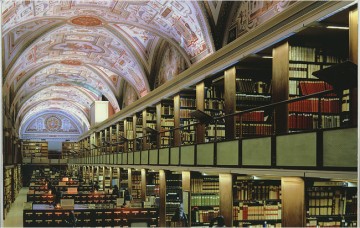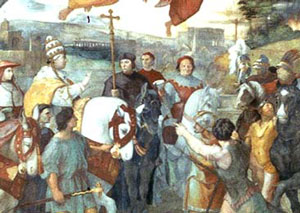 The Vatican Apostolic Library has announced that more than 4,000 ancient manuscripts will now be available online as part of a digital archive.
The Vatican Apostolic Library has announced that more than 4,000 ancient manuscripts will now be available online as part of a digital archive.
Global IT service provider NTT DATA has developed the service, which displays high definition digital reproductions of the texts at the library’s website.
A special viewer built by the firm’s digital archive solution technology, AMLAD, enables manuscripts to be examined across a variety of devices, including tablets.
The release is part of a four-year project launched in March. NTT DATA had to establish the infrastructure for the long-term storage, safekeeping and viewing of digital specimens. The company also hopes to provide an efficient search function for the library’s digital artefacts by the end of the year.
Toshio Iwamoto, president and CEO of NTT, said that the firm was extremely excited to bring the collection to a wider audience.
Prefect of the Vatican Apostolic Library, Monsignor Cesare Pasini added that the Vatican gladly adopts the use of innovative technologies in order to make “these treasures of humankind more widely known, in a profound spirit of universality”.
The digital archives can also be accessed via a portal site managed by Digita Vaticana, a foundation raising funds for the library’s preservation projects.
The Vatican Library is one of the oldest in the world and currently contains 75,000 codices, 1.1 million printed books and an estimated 8,500 incunabula. It was formally established in 1475,
In the 17th century, the Vatican Secret Archives were separated from the library at the start of the 17th century and are believed to contain an additional 150,000 items and it was these that Dan Brown made a big thing about in his books. Unfortunately, for conspiracy theorists, the “secret archives” is a mistranslation – it is actually a private library for private papers and it is allowed to be viewed by more than 1000 scholars. No word as to when these will be made public.






